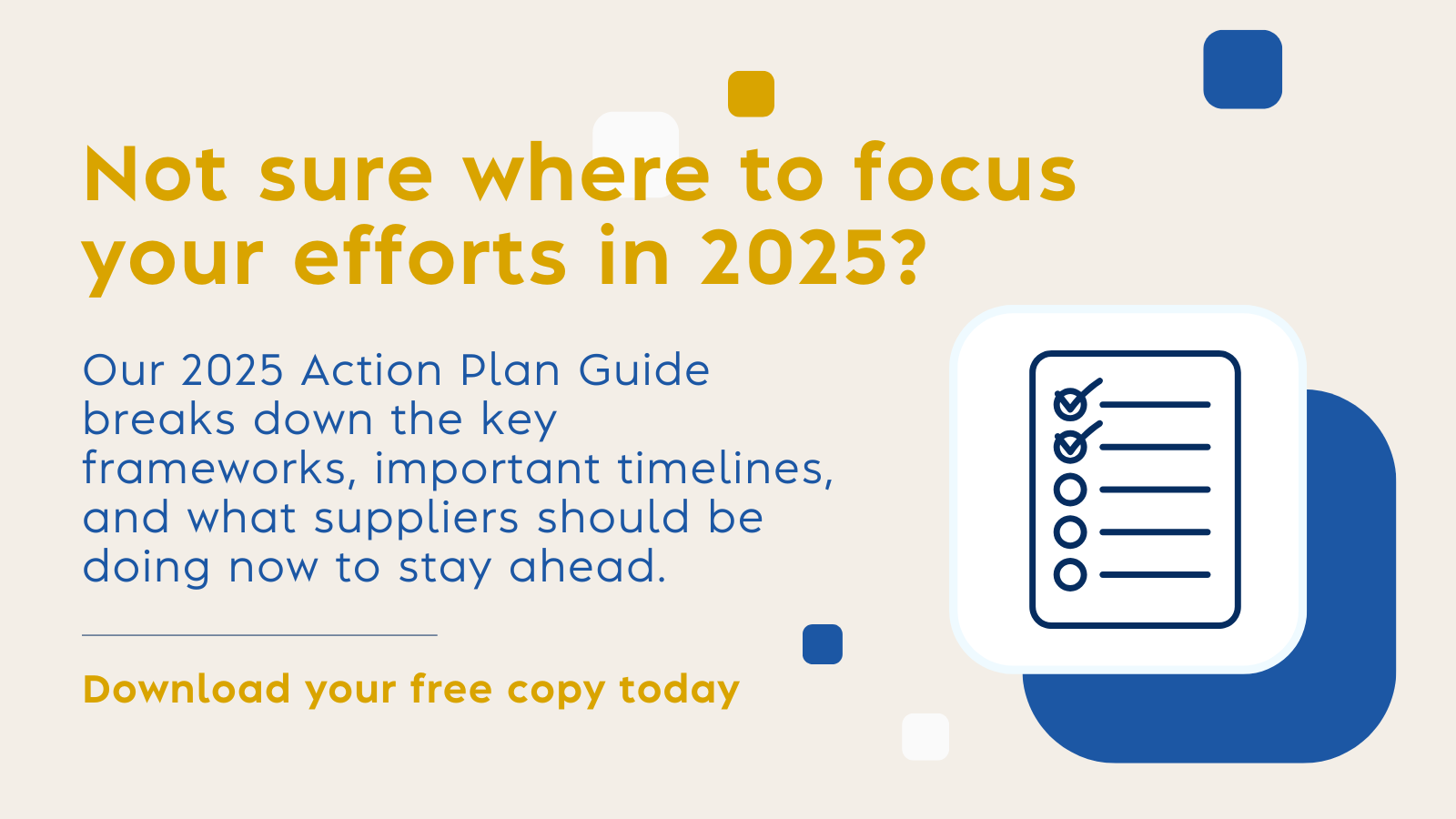2025 is shaping up to be a huge year for technology suppliers in public sector procurement. With major frameworks launching and the Procurement Act 2023 now live, suppliers must be strategic, prepared, and proactive to secure their place and win contracts.
This blog breaks down the key technology frameworks in 2025, what’s changing, and how suppliers can position themselves for success.
Key Technology Frameworks Opening in 2025
The public sector continues to invest heavily in technology, cloud services, and digital transformation, creating new opportunities for suppliers.
Technology Services 4
Expected to launch in mid-2025, Technology Services 4 (TS4) will replace Technology Services 3, providing a broad framework for IT services. This framework is designed for suppliers offering services such as cloud hosting, software development, cybersecurity, and consultancy. TS4 is expected to expand on TS3, with a wider scope and more specialist lots covering emerging technologies.
Winning a place on TS4 is particularly valuable as it is used by central government, local authorities, the NHS, and emergency services, offering long-term, high-value contracts. To prepare, suppliers should assess which lots align with their expertise and ensure they meet compliance requirements such as Cyber Essentials+, ISO 27001, and financial viability checks. Those who engage early with public sector buyers will have a stronger position when mini-competitions begin.
Digital Outcomes 7
Set to launch in Q3 2025, Digital Outcomes 7 (DOS7) is the primary framework for agile digital teams and specialists. This framework supports public sector organisations in procuring services related to user research, software development, and digital transformation. DOS7 is expected to place a greater emphasis on user-centred design and introduce opportunities for suppliers specialising in AI and automation.
With DOS7, suppliers need to be bid-ready, as the framework operates on a mini-competition model where quick turnaround times are common. Public sector buyers typically seek teams with strong digital expertise, so suppliers should ensure they have a clear track record of delivering successful digital projects. Partnering with other suppliers to provide full-service digital teams can also be a strategic advantage.
G-Cloud 15
Launching in July 2025, G-Cloud 15 remains one of the largest and most accessible cloud frameworks in the UK public sector. This framework allows suppliers to offer SaaS, PaaS, IaaS, and cloud support services to government buyers without requiring a full tender process.
The G-Cloud framework is highly competitive, and buyers are increasingly focused on security, compliance, and sustainability when selecting suppliers. To prepare, suppliers should review their service descriptions, pricing structures, and security certifications (such as Cyber Essentials+ and ISO 27001). Those already listed on G-Cloud 14 should ensure they are ready to renew and update their offerings.
NHS & Sector-Specific Frameworks
Several NHS and sector-specific frameworks are also opening in 2025, presenting key opportunities for technology suppliers. The NHS SBS Intelligent Automation 2 framework will focus on AI, robotic process automation (RPA), and workflow automation solutions, requiring suppliers to demonstrate clear ROI and efficiency benefits for healthcare organisations. Meanwhile, the NHS SBS Cloud Solutions 3 framework will cover cloud hosting, data analytics, and cybersecurity, with strict compliance measures in place for handling NHS data.
Another significant framework is Big Data & Analytics 2, which supports the procurement of data science, AI-driven insights, and analytics platforms. Buyers using this framework are looking for scalable, interoperable solutions that integrate seamlessly with existing government infrastructure. Suppliers with strong data security and ethical AI credentials will be in high demand.
How to Prepare for Framework Success
Being listed on a framework is only the first step—suppliers need a clear strategy to maximise their opportunities and win contracts. We recommend following this step-by-step approach:
📌 Step 1: Identify your best-fit frameworks
Assess which frameworks align with your business model and capabilities. Each framework has specific requirements, including financial checks, accreditations, and case studies. Suppliers should review eligibility criteria carefully and ensure they meet the necessary standards before applying.
📌 Step 2: Prepare compliance & documentation
Ensure all key documentation is up to date, including financial records, ISO certifications, Cyber Essentials+, and case studies. Having these ready early will prevent last-minute issues when applications open.
📌 Step 3: Develop a buyer engagement strategy
Start conversations with public sector procurement teams before frameworks go live. Being listed does not guarantee sales—buyers need to be aware of your offering. Suppliers should:
- Attend supplier engagement events and networking opportunities.
- Leverage digital marketing (LinkedIn, case studies, and thought leadership content).
- Proactively connect with buyers in their target sector.
Those who build relationships early will have a significant advantage when contract opportunities arise.
📌 Step 4: Be bid-ready
Most frameworks operate through mini-competitions, requiring a strong bid strategy. To respond quickly and effectively, suppliers should:
- Create a bid library with reusable content, including past responses, case studies, and pricing models.
- Develop a clear value proposition that aligns with public sector priorities.
- Ensure bid teams are prepared to meet short deadlines.
Suppliers who position themselves as trusted, compliant, and responsive will be more competitive in securing contracts.
What suppliers should be doing now
With so many frameworks launching in 2025, suppliers should act now to ensure they are in the best possible position. The first step is to research and identify the frameworks that align with their services and strategic goals. Not every framework will be suitable, so focusing on the most relevant opportunities is essential.
Framework application windows can be short, so suppliers should check key deadlines and begin preparing their documentation in advance. This includes ensuring that financials, certifications, and case studies are up to date, as well as reviewing the specific compliance requirements for each framework.
Finally, suppliers should start engaging with public sector buyers before the frameworks go live. Building relationships with decision-makers early can make a significant difference when it comes to winning work. Reaching out to procurement teams, attending industry events, and showcasing relevant case studies are all effective ways to get noticed.
Technology frameworks in 2025 are full of opportunities—but only for suppliers who plan ahead. With the Procurement Act changing how contracts are awarded and key frameworks launching throughout the year, suppliers need to be proactive in understanding the landscape, engaging with buyers, and preparing bids.
For suppliers who need guidance on framework applications, bid preparation, or positioning their services effectively, Advice Cloud is here to help. Need help navigating the 2025 framework landscape? We’ve helped hundreds of suppliers secure public sector contracts. Book a free chat with our team today.
If you want to dive deeper into 2025’s framework landscape, you can watch our latest Action Plan 2025 webinar for expert insights.




